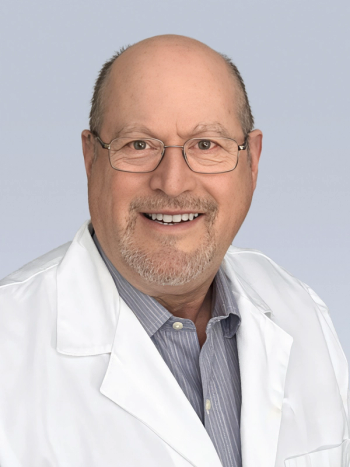
Neoadjuvant Combo Effective for Triple-Negative Breast Cancer
The addition of carboplatin chemotherapy or bevacizumab to the standard neoadjuvant chemotherapy boosted the number of women with triple-negative breast cancer who had no residual cancer at the time of surgery.
The addition of carboplatin chemotherapy or bevacizumab to the standard presurgical chemotherapy boosted the number of women with triple-negative breast cancer who had no residual cancer at the time of surgery. This result was presented at the 2013 San Antonio Breast Cancer Symposium (SABCS).
The preliminary results show that adding carboplatin or bevacizumab to a paclitaxel neoadjuvant backbone results in additive increases to the pathologic complete response (pCR) in stage II/III triple-negative breast cancer patients.
In the breast and axilla, pCR rates were 41% in patients who did not receive carboplatin compared with 54% among those who did receive carboplatin therapy (odds ratio [OR], 1.71; P = .0029). In the breast, pCR rates were also higher among patients who received bevacizumab compared with those who did not (59% vs 48%, respectively; OR, 1.58; P = .0089). Rates of pCR in the breast and axilla increased in the bevacizumab arm vs the non-bevacizumab arms, but the result was not statistically significant.
It remains to be seen whether the increase in responses from the addition of carboplatin or bevacizumab will translate to lower long-term recurrence rates and fewer deaths. Patients will be followed for 10 years after surgery to assess the potential long-term benefits from the combination regimen.
“Patients who received both carboplatin and bevacizumab had the highest pCR in the breast,” said William M. Sikov, MD, of the Miriam Hospital and Warren Alpert Medical School of Brown University, Providence, Rhode Island, during a press briefing.
There was no evidence of a more than additive effect of combining carboplatin and bevacizumab on top of a standard neoadjuvant chemotherapy backbone, said Dr. Sikov.
The phase II Cancer and Leukemia Group B (CALGB) 40603 trial enrolled 454 patients with operable, stage II or III triple-negative breast cancer. All patients were treated with a neoadjuvant regimen of 80 mg/m2 weekly paclitaxel for 12 cycles followed by doxorubicin (60 mg/m2) and cyclophosphamide (600 mg/m2) every 2 weeks for 4 cycles. The study followed a 2 × 2 randomization scheme. Patients were randomized to receive either no additional therapy, carboplatin, bevacizumab, or both carboplatin and bevacizumab. Carboplatin (AUC 6) was administered every 3 weeks for 4 cycles concurrent with paclitaxel. Bevacizumab was given at 10 mg/kg every 2 weeks for 9 cycles. All patients subsequently underwent surgery 4 to 8 weeks after completing the neoadjuvant regimen.
The study compared the two treatment arms that received carboplatin with the two arms that did not, and the two arms that received bevacizumab to the two arms that did not receive the anti-angiogenesis therapy. The study was not powered to evaluate the individual treatment arms.
The median age of patients on the trial was 48 years and the majority of patients (68%) had stage II disease.
Forty-two percent of the 108 patients who received standard chemotherapy alone had no detectable cancer in the breast and 39% had no detectable cancer in the breast or lymph nodes. Of the 110 patients treated with additional bevacizumab, 50% had no detectable cancer in the breast and 43% had no detectable cancer in the breast and lymph nodes. The proportions of patients with no cancer detectable in the breast and in the breast and lymph nodes were 53% and 49%, respectively, in the group assigned to standard chemotherapy plus carboplatin; and 67% and 60%, respectively, in the group assigned to standard chemotherapy plus the combination of carboplatin and bevacizumab.
The current results assessed data from 354 patients. A total of 59 did not complete the regimen and 30 discontinued as a result of adverse events. Patients in the bevacizumab treatment arm were more likely to discontinue the trial: a total of 23% in the bevacizumab arm discontinued compared with 6% to 13% for the other treatment regimens.
Grade 3/4 adverse events were generally higher in the group treated with carboplatin compared with those not treated with carboplatin, including neutropenia (56% vs 22%, respectively) and thrombocytopenia (20% vs 4%). Neutropenia was highest among patients who were treated with both carboplatin and bevacizumab (67%).
“More concerning side effects were seen in the bevacizumab treatment arms,” said Dr. Sikov during a press briefing.
A greater proportion of patients treated with bevacizumab experienced grade 3 hypertension compared with those in the non-bevacizumab arms (12% in the bevacizumab treatment arm, 10% in the bevacizumab/carboplatin arm, and 0% in the standard chemotherapy arm). One patient death occurred in the carboplatin/bevacizumab therapy arm. Patients treated with both carboplatin and bevacizumab had a higher rate of febrile neutropenia (24% vs 7%).
There was a slightly higher rate of surgical complications in patients who received bevacizumab. This was even though the drug was stopped at a minimum of 6 weeks prior to surgery, according to Dr. Sikov.
Postsurgical complications-mostly hematomas and seromas-occurred in 5% of patients not treated with bevacizumab, compared with 9% in patients treated with bevacizumab. Delayed wound healing after surgery was higher in the bevacizumab treatment arms (4% vs 1%, respectively).
Triple-negative breast cancer accounts for approximately 20% of all invasive breast cancer cases and is more common among younger women. Women with triple-negative breast cancer have a poorer prognosis and earlier recurrence.
Based on a previous study, about 34% of triple-negative breast cancer patients who undergo standard neoadjuvant chemotherapy treatment have a pCR, meaning that no cancer cells are identified in the breast tissue and lymph nodes during surgery. Such a response is associated with a lower risk of recurrence compared with patients who do not respond to neoadjuvant chemotherapy.
The optimal carboplatin dose in this patient population for both safety and efficacy is not clear, Dr. Sikov acknowledged.
Three trials have now showed that adding bevacizumab increases pCR, although the BP-40 study did not show a statistically significant increase and none of the studies were powered to demonstrate overall survival or relapse-free survival benefit. All of these studies did show an increase in toxicities including neutropenia, blood clotting, and post-operative complications.
“Bevacizumab increased the pCR rates but at the cost of increased toxicity, and I don’t think that should be routinely added to neoadjuvant chemotherapy,” said Dr. Sikov.
Dr. Sikov added that if a clinician decides that a triple-negative breast cancer patient should receive neoadjuvant chemotherapy, that it makes sense to add carboplatin, which has an acceptable toxicity profile.
Newsletter
Stay up to date on recent advances in the multidisciplinary approach to cancer.



















































































